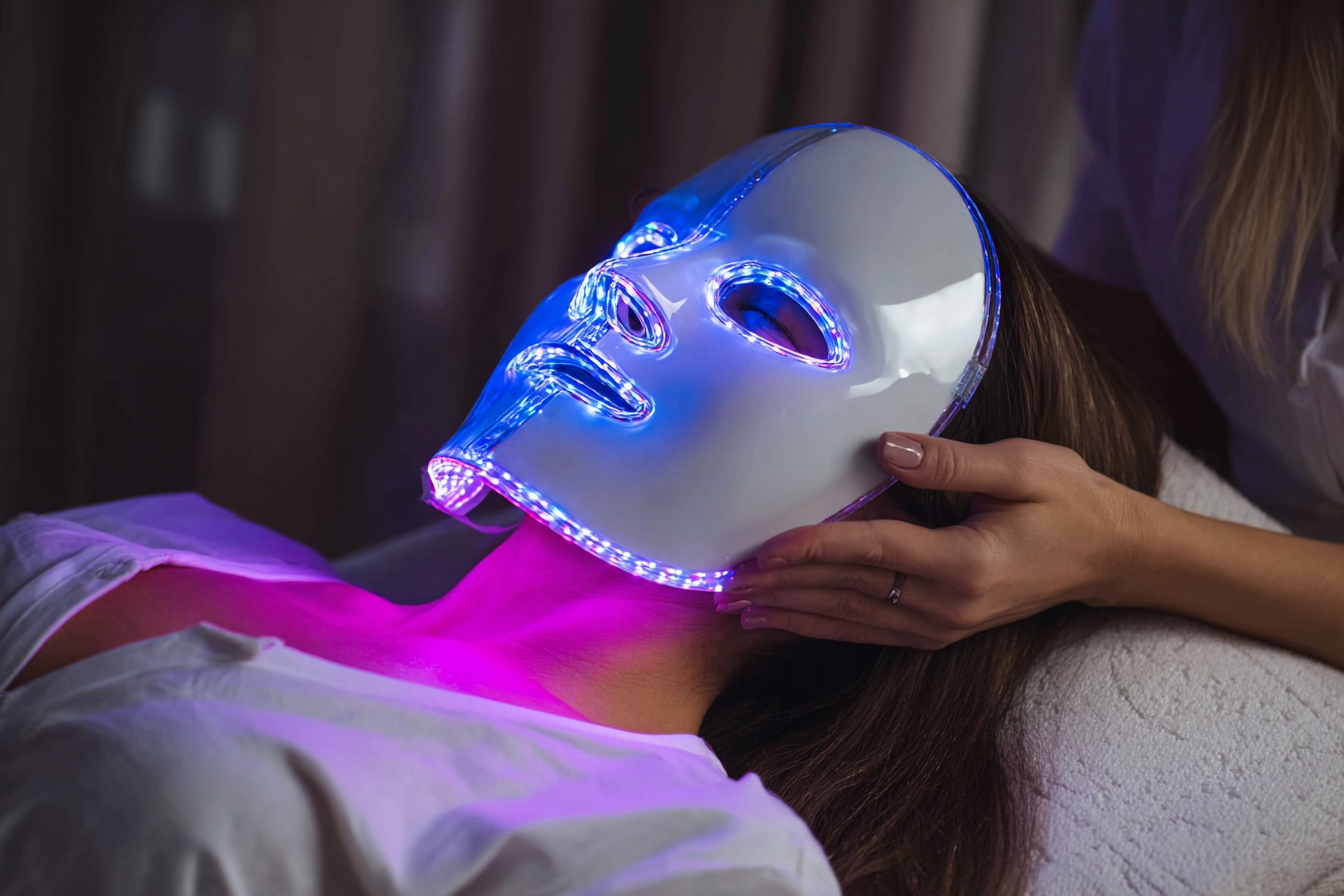Why Do Some Clients React to Vitamin C and Others Do Not?
Vitamin C has moved from niche antioxidant to non-negotiable in many professional skincare menus. Yet for every client who swears by their brightening serum, there is another who reports stinging, flushing or rough texture after introducing it. For practitioners, understanding why vitamin C behaves beautifully in some skins and irritates others is essential for safe recommendations, realistic expectation-setting and troubleshooting when things go wrong.
Not all vitamin C is the same
The first distinction to make is chemical. When most people say “vitamin C” in skincare, they usually mean L-ascorbic acid in water-based formulas. This is the pure, biologically active form that has the most research behind it for collagen stimulation, antioxidant protection and pigment regulation. The trade-off is that it requires a low pH and relatively high concentrations to be effective. Both factors increase the potential for stinging and irritation, particularly in compromised or sensitive skin.
Alongside L-ascorbic acid sit a range of derivatives such as magnesium ascorbyl phosphate, sodium ascorbyl phosphate, ascorbyl glucoside and lipid-soluble forms like tetrahexyldecyl ascorbate. These tend to be more pH-neutral and often sit in cream or oil systems that feel gentler on application. They usually convert to active ascorbic acid within the skin, rather than arriving in its pure form at a low pH on the surface, which is one reason many reactive clients tolerate them better. When a client “cannot use vitamin C”, it is often that their skin is intolerant of a specific format of L-ascorbic acid, rather than the entire vitamin C family.
pH, strength and vehicle all change the experience
Stinging is often less about the ingredient and more about how it is delivered. L-ascorbic acid is typically formulated at a pH below 3.5 for optimal stability and penetration. On healthy, resilient skin, that short, sharp pH drop may simply feel “active”. On a barrier-impaired or naturally sensitive skin, the same formula can trigger intense stinging, redness and a feeling of heat.
Concentration matters too. Many popular serums sit in the 15–20% range, which is attractive from a marketing perspective yet not essential for every skin. A client with thinner, fair, redness-prone skin may be far better served by a 5–10% formula in a hydrating vehicle, particularly if they already use other actives. Lower concentrations can still provide meaningful antioxidant benefits, especially when worn daily under SPF.
The vehicle and format also influence tolerability. An anhydrous (water-free) silicone or oil-based vitamin C can feel smoother on application and is less reliant on a very low pH, so is often perceived as less irritating. Cream formats can buffer sensation because emollients and humectants sit alongside the active. In contrast, a thin, watery serum applied directly after cleansing on slightly damp skin will penetrate quickly and show every flaw in the barrier. Two formulas with the same percentage on paper can feel very different when they hit the skin.
Barrier health is the hidden variable
From a professional perspective, one of the biggest predictors of vitamin C tolerance is barrier function. Clients with a healthy lipid matrix, consistent moisturiser use and minimal over-exfoliation usually cope well with appropriately chosen vitamin C products. Those who layer multiple acids, use foaming cleansers, or have a history of eczema, rosacea or atopic skin are much more likely to report burning, roughness or delayed irritation.
Compromised barrier function leads to increased transepidermal water loss and greater access for low-pH actives to nerve endings in the epidermis. What the client experiences as “allergy” is often a sensory response from an exposed, dehydrated barrier rather than a true allergic contact dermatitis. For practitioners, this is a crucial distinction. When a client reacts, it is worth stepping back and asking what the barrier has been subjected to in the weeks prior, not just blaming the last product added.
Irritation, allergy or just activity
Clients will often present with the blanket statement that they are “allergic to vitamin C” because a serum stung or caused temporary redness. It is important to differentiate three scenarios in clinic.
First is transient, non-specific stinging on application, which subsides within a few minutes and leaves no visible aftermath. This is common with low-pH formulas applied to slightly compromised skin and does not necessarily indicate that the product must be discontinued, although it may suggest that the barrier needs more support.
Second is irritant contact dermatitis. Here the client may develop sustained redness, roughness, flaking or a burning sensation that worsens with continued use. This is a dose-dependent phenomenon and relates to the strength, frequency and context of use rather than the immune system. Reducing frequency, choosing a lower concentration or switching to a gentler derivative often resolves the issue.
Third is true allergic contact dermatitis, which is immune-mediated and can present with significant redness, swelling, itching and sometimes vesicles. In many cases, the allergen is not the ascorbic acid itself but another component of the formula such as fragrance, certain preservatives or solvents. This is one reason why a client may react to one vitamin C serum yet tolerate another from a different brand. Patch testing with a dermatologist can help identify the specific trigger when reactions are severe or persistent.
Oxidation and formulation quality
Vitamin C is notoriously unstable. Exposure to light, heat and air converts ascorbic acid into oxidised forms that can discolour the product and potentially increase irritation. An orange or brown serum is a clear sign of oxidation. While an oxidised formula is usually less effective as an antioxidant, it may also be more sensitising for some clients, especially if they already have reactive skin.
Packaging is therefore not just a branding decision but a tolerability issue. Airless pumps, opaque components and smaller fill sizes that are used up more quickly all support stability. Educating clients to store vitamin C away from direct sunlight, to close lids tightly and to discontinue use if colour or odour change significantly can reduce the risk of unwanted reactions.
The role of other actives and routines
Vitamin C rarely operates alone. Many clients introducing a potent vitamin C serum are already using exfoliating acids, retinoids or other potentially irritating actives. Stacking all of these into a single morning and evening routine sets the stage for barrier overload and makes it impossible to know which active is responsible when irritation appears.
From a trade perspective, it is worth building clear protocols for how vitamin C fits within wider treatment and home care plans. For clients new to active skincare, starting with vitamin C on alternate mornings, buffering with moisturiser and avoiding leave-on acids in the same routine is usually more successful than an all-at-once approach. Those already on prescription retinoids or strong exfoliants may do better with a gentler vitamin C derivative or using it on rest days rather than daily.
Skin type, ethnicity and underlying conditions
Intrinsic skin characteristics also influence response. Fair, thin, highly vascular skin with a tendency to flushing will often feel and show the effects of low-pH actives more dramatically than thicker, oilier skin types. Clients with rosacea or seborrhoeic dermatitis are prone to stinging from many leave-on products, including vitamin C, even at low concentrations.
In darker skin tones, the priority is often not acute stinging but the risk of post inflammatory hyperpigmentation if irritation becomes chronic. Any active, including vitamin C, that repeatedly disrupts the barrier and causes low-grade inflammation can be counterproductive. For these clients, lower strengths, neutral pH derivatives and cream-based vehicles, combined with diligent sunscreen use, will usually deliver better brightening and pigment-regulating results than aggressive low-pH regimens.
How practitioners can assess and adjust
For therapists and aesthetic practitioners, the goal is not to label vitamin C as “good” or “bad”, but to understand which client, which form and which routine are a safe match. A structured consultation can make the difference between a glowing review and a complaint.
Key questions include how many active products the client is already using, their history of eczema, rosacea or allergies, and any previous reactions to fragranced products. Examining the skin for signs of barrier impairment such as flaking, fine crepiness, tightness or erythema should guide whether to introduce vitamin C immediately or to spend several weeks rebuilding the barrier first.
Patch testing a vitamin C formula behind the ear or on the side of the neck for a few nights can provide useful information before applying it across the face, especially in clients with long histories of cosmetic sensitivity. Educating the client that a brief tingle is not the same as an allergic reaction, and that any sustained burning, marked redness or swelling means they should stop and contact the clinic, sets clear expectations.
The take-home for clinics
The reason some clients react to vitamin C and others do not lies in a complex interplay of chemistry, formulation, barrier status, co-actives and individual biology. For a trade audience, the practical message is that most reactions are both predictable and preventable when you understand these levers. By choosing the right form, strength and vehicle for the right skin, timing its introduction carefully, and supporting the barrier before and alongside antioxidant use, you can keep vitamin C as a powerful ally in clinic rather than a frequent cause of complaints and product returns.










